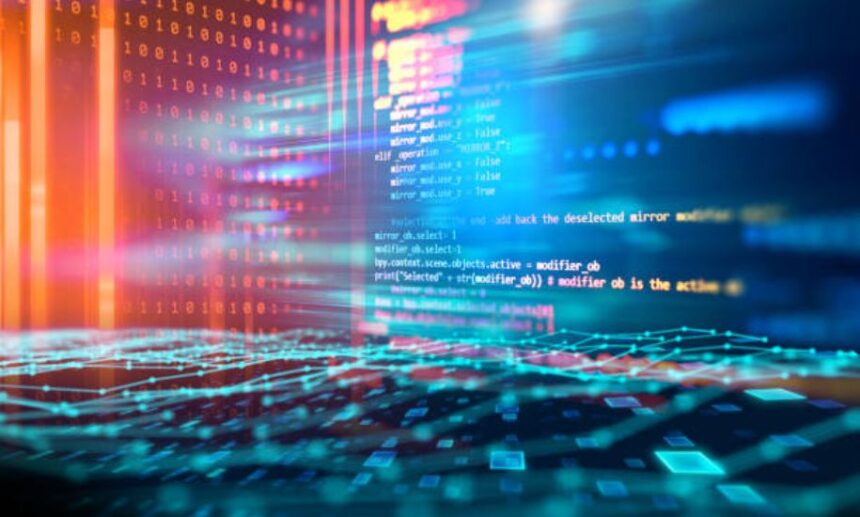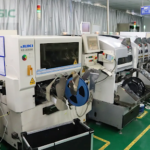Welcome to Baddie Hun, your go-to source for daily insights on tech, business, software, and apps. In this article, we explore a captivating concept in the intersection of music, code, and digital innovation: Harmonicode. With increasing advancements in artificial intelligence and creative computing, Harmonicode is emerging as an exciting space where sound meets syntax, and harmony blends with logic. But what exactly is Harmonicode?? Let’s dive deep.
What is Harmonicode??
Harmonicode is a unique conceptual framework or system that explores the blending of harmonics (musical tones) and code (programming language). It may not yet be a standardized platform or commercial tool, but rather an innovative idea gaining traction among developers, sound engineers, and digital artists. At its core, Harmonicode?? represents the convergence of music theory and software development, offering new creative and functional ways to generate, manipulate, and experience sound through programming.
Why Harmonicode?? The Purpose Behind the Harmony
The idea of Harmonicode emerges from the long-standing relationship between music and mathematics. Both disciplines involve patterns, structures, and logic. Just as coding requires syntax and order, music relies on scales, frequencies, and time signatures. Harmonicode?? leverages this natural connection to build creative algorithms that compose or interact with music.
Whether it’s generating musical compositions through Python or using JavaScript to create interactive soundscapes, Harmonicode encourages a new wave of digital music craftsmanship. This makes it particularly valuable in industries like gaming, multimedia production, AI-generated content, and interactive installations.
Components That Define Harmonicode??
To better understand Harmonicode, it helps to break it down into its primary components:
1. Coding Languages in Harmonicode
While any language could potentially be used, most Harmonicode projects lean into languages suited for audio processing and real-time feedback. Some popular options include:
-
Python (with libraries like PyDub or Mingus)
-
JavaScript (especially with Web Audio API and Tone.js)
-
C++ (used in music plugins and DAWs)
-
Max/MSP and Pure Data (visual programming tools)
These languages allow users to write functions that correlate with musical outputs, such as tones, beats, melodies, or ambient loops.
2. Musical Logic
In Harmonicode, music is not just sound—it’s data. Notes are treated like objects; melodies are arrays; chord progressions become logic trees. Understanding music theory enhances the coding structure, making Harmonicode both an artistic and technical challenge.
3. User Interfaces and Interaction
Some Harmonicode systems involve real-time interaction, such as live coding performances (aka “algoraves”) where musicians write code that generates music on the fly. Interfaces may include:
-
MIDI controllers
-
Custom GUIs
-
Keyboard inputs
-
Sensors or motion-based devices
The Applications of Harmonicode??
The versatility of Harmonicode?? opens the door to several practical and creative applications. Let’s take a look at where this tech-musical hybrid is making waves.
1. Live Music Performances
Musicians and coders are joining forces to create live shows where code is projected onscreen while it dynamically composes or modifies music in real-time. This pushes the boundary of performance art, making Harmonicode not only audible but also visual and intellectual.
2. Educational Tools
Harmonicode can simplify music learning by merging theory with experimentation. For instance, students can see how altering code affects pitch, rhythm, or harmony—learning both coding and music simultaneously.
3. Therapeutic and Mindfulness Applications
Through generative code-based music, Harmonicode can be used to produce soundscapes for meditation, relaxation, or therapy. The logical nature of code combined with soothing harmonic patterns creates a controlled yet flexible environment for sound healing.
4. AI and Machine Learning Integration
AI systems can be trained on datasets of music and then used to write code that generates new compositions. In this setup, Harmonicode becomes a bridge between human creativity and machine intuition, pushing the boundaries of what machines can express artistically.
Harmonicode and the Digital Age: Innovation Meets Expression
In today’s digital-first world, boundaries between disciplines continue to blur. The success of platforms like Baddie Hun lies in exploring intersections like those presented by Harmonicode??. This system is not just a quirky idea—it reflects a growing demand for interdisciplinary creativity.
Musicians are learning to code. Coders are exploring the arts. Designers want sound. Engineers want emotion. Harmonicode is perfectly positioned at this crossroads.
Challenges in Developing Harmonicode??
Like any innovation, Harmonicode comes with its own set of challenges:
-
Accessibility: Coding and music both require knowledge that might intimidate beginners.
-
Standardization: There is no formal structure or governing body for Harmonicode, making collaboration or mainstream adoption harder.
-
Performance Lag: Real-time audio manipulation can suffer from latency, especially in browser-based systems.
-
Creative Boundaries: Not every artist embraces logic-driven composition.
Still, these obstacles are being addressed by passionate communities across forums, GitHub repositories, and events around the world.
Harmonicode vs Traditional Music Composition
Traditional composition involves instruments, notation, and perhaps digital audio workstations (DAWs). Harmonicode shifts this workflow into a purely digital and logic-based environment. This means:
-
Instead of scoring by hand, you define a scale algorithm.
-
Rather than pressing piano keys, you trigger events through code.
-
Sound becomes modular and generative, not static.
This can feel liberating for tech-minded creators, and perhaps confusing for analog musicians. Yet, it’s an evolution worth exploring, especially as more hybrid creators emerge.
The Future of Harmonicode??
Where does Harmonicode?? go from here? While it may still be a niche concept, it’s rooted in real demand. The rise of generative art, digital performances, and code-as-art movements means Harmonicode could be part of mainstream music innovation in the coming years.
In the future, we might see:
-
Educational platforms teaching Harmonicode to kids
-
Music festivals featuring live coded performances
-
Apps and DAWs incorporating real-time Harmonicode scripting
-
Baddie Hun and other forward-thinking blogs pushing this innovation into broader visibility
Final Thoughts from Baddie Hun
At Baddie Hun, we’re always watching the edges of technology, where the next big thing brews quietly. Harmonicode is not just about writing notes—it’s about writing logic that sings. It’s a paradigm that speaks to the heart of modern innovation: blending human expression with machine execution.
Whether you’re a coder curious about sound, a musician eager to experiment, or simply a tech enthusiast looking for the next frontier, Harmonicode deserves your attention. It’s creative. It’s logical. And it might just be the harmony your code has been missing.





